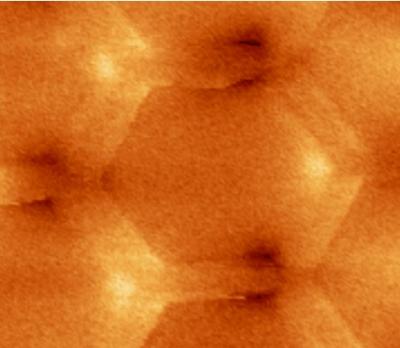A research team from the Imperial College London has shown that a honeycomb pattern composed of nano-sized magnets in spin ice triggers competition between adjoining magnets, and drastically lessens the issues caused by the interactions between magnetic domains in data storage devices.
 Scientists have taken an important step forward in developing a new material using a honeycomb mesh of nano-sized magnets that could ultimately lead to new types of electronic devices, with greater processing capacity than is currently feasible, in a study published today in the journal Science. (Credit: Will Branford, Imperial College London)
Scientists have taken an important step forward in developing a new material using a honeycomb mesh of nano-sized magnets that could ultimately lead to new types of electronic devices, with greater processing capacity than is currently feasible, in a study published today in the journal Science. (Credit: Will Branford, Imperial College London)
The research team has also demonstrated that a cluster of these nano-magnets is capable of storing complex computable information. The information can then be read by calculating the electrical resistance of these arrays.
This discovery paves the way to develop a new material utilizing the honeycomb mesh of nano-magnets to design a new class of electronic devices, with a capacity better than is currently viable. The study results have been reported in Science.
The research team is seeking ways to harness the magnetic state of nano-structured spin ices utilizing a magnetic field and to read their state using the measurement of their electrical resistance. The team discovered that the magnetic bits behave in a collective way and self-assemble to form patterns at temperatures below −223°C, causing a change in their electrical resistance. Hence the passage of an electric current through the material generates a characteristic measurement that can be identified by the researchers. The major challenge is to find a way to use these patterns to do computations at room temperatures.
This discovery demonstrates the possibility of using a group of multiple magnetic domains to solve a complicated computational problem in a single calculation, which is called as a neural network that works like the brain. However, to fabricate prototype devices using this technique, many obstacles need to be cleared, one of which is development of an algorithm to manipulate the calculation. This algorithm’s nature will decide whether the low temperature collective behavior can be utilized or the room temperature state. The research team believes that if these issues are solved, this magnetic honeycomb-based technology might be ready for use in the next 10-15 years.
The head of the team, Dr Will Branford informed that the team’s next major challenge is to create a nano-magnet array that is self-programmable and eliminates the use of exterior magnetic fields.